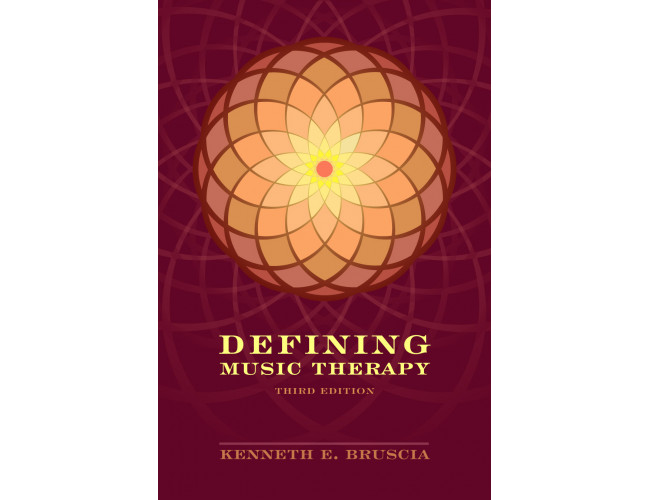Defining Music Therapy (3rd Edition)
- Author: Bruscia, Kenneth E.
- ISBN: 9781937440572
- E-ISBN: 9781937440589
The third edition of this book is the culmination of a 25 year project aimed at conceptualizing music therapy in a critically inclusive and integrative way. To be critically inclusive, the definition must provide an umbrella that embraces all professional practices and concepts that have been deemed viable in the refereed literature, while also excluding those concepts and practices: that do not rely on music; that occur outside of a professional therapist-client relationship; and that are not concerned with addressing the client’s health. To be integrative, the definition must offer myriad options for using music to address the client’s health concerns—as indicated by client need rather than therapist orientation.The resulting definition is a working and provisional one, based on over 100 existing definitions. It has been co-constructed by the author (who is situated in American music therapy), experienced colleagues, and authors and associations around the world who have crafted their own definition of music therapy. Its relevance is clearly situated with Western cultures that use the English language for scholarly purposes.
TABLE OF CONTENTS
Copyright Page/ iv
Dedication/ v
Acknowledgments/ vi
Table of Contents/ vii
List of Tables and Figures/ xiii
Preface/ xv
Introduction: The Story of Defining/ xix
Chapter 1: The Need for Defining / 3
Chapter 2: The Challenges of Defining / 8
Chapter 3: An Analysis of Existing Definitions/ 22
Chapter 4: A Working Definition / 35
Chapter 5: Process / 44
Chapter 6: Reflexive/ 54
Chapter 7: Therapist / 66
Chapter 8: Helps / 74
Chapter 9: Client/ 91
Chapter 10: To Optimize the Client’s Health/ 97
Chapter 11: Using Music Experiences/ 110
Chapter 12: Levels of Experience/ 121
Chapter 13: Types of Experiences: The Four Main Methods/ 127
Chapter 14: Facets of Music Experience/ 140
Chapter 15: Relationships/ 158
Chapter 16: Formed/ 160
Chapter 17: Impetus/ 176
Chapter 18: Change/ 186
Chapter 19: A Discipline of Practice, Theory, and Research/ 195
Chapter 20: Criteria for Areas and Levels of Practice/ 203
Chapter 21: Didactic Practices/ 210
Chapter 22: Medical Practices/ 216
Chapter 23: Healing Practices/ 220
Chapter 24: Psychotherapeutic Practices/ 232
Chapter 25: Recreational Practices/ 239
Chapter 26: Ecological Practices/ 242
Chapter 27: Integral Thinking/ 251
Chapter 28: Integral Practice/ 260
Chapter 29: Conclusions and Implications/ 268
Notes/ 271
- 2A: Building on Cultural and Discursive Constructions of Music Therapy/ 272
- 2B: Different Conceptions of Discipline and Profession/ 277
- 5: Intervention—Deconstructed/ 280
- 6A: Systematic—Deconstructed/ 282
- 6B: The Fallacies of Holism/ 284
- 6C: Nondirectiveness: An Illusion/ 286
- 8A: Help—Deconstructed/ 288
- 8B: The Role of Power in Therapy/ 291
- 8C: Help and Hierarchy in Therapy/ 295
- 9: Client—Deconstructed/ 301
- 10: Promote Health—Deconstructed/ 304
- 11: Music Experiences and Relationships—Deconstructed/ 308
- 17: Dynamic Forces—Deconstructed/ 309
- 18: Change—Deconstructed/ 310
Appendix/ 313
References/ 333
Index/ 363

